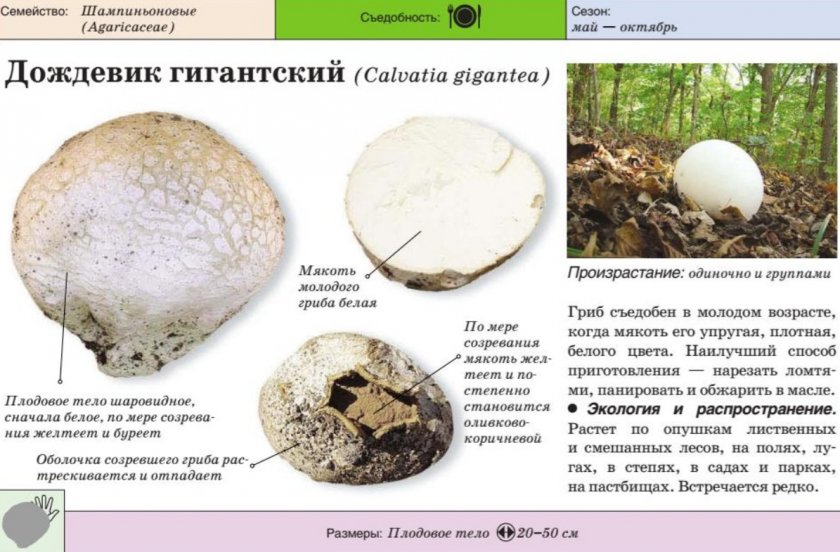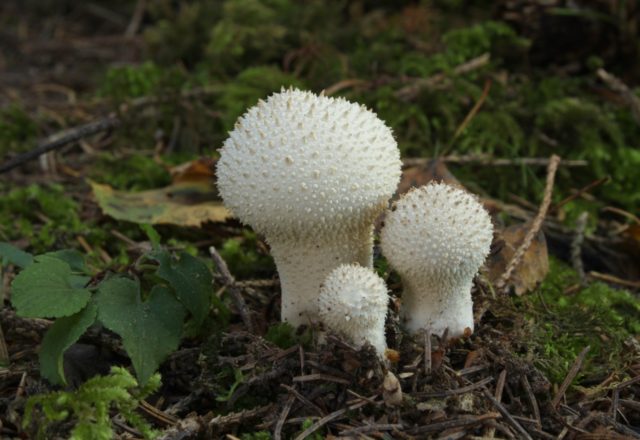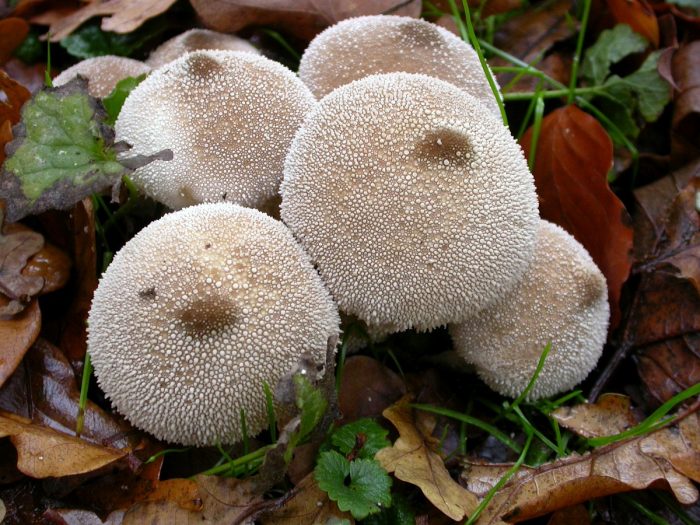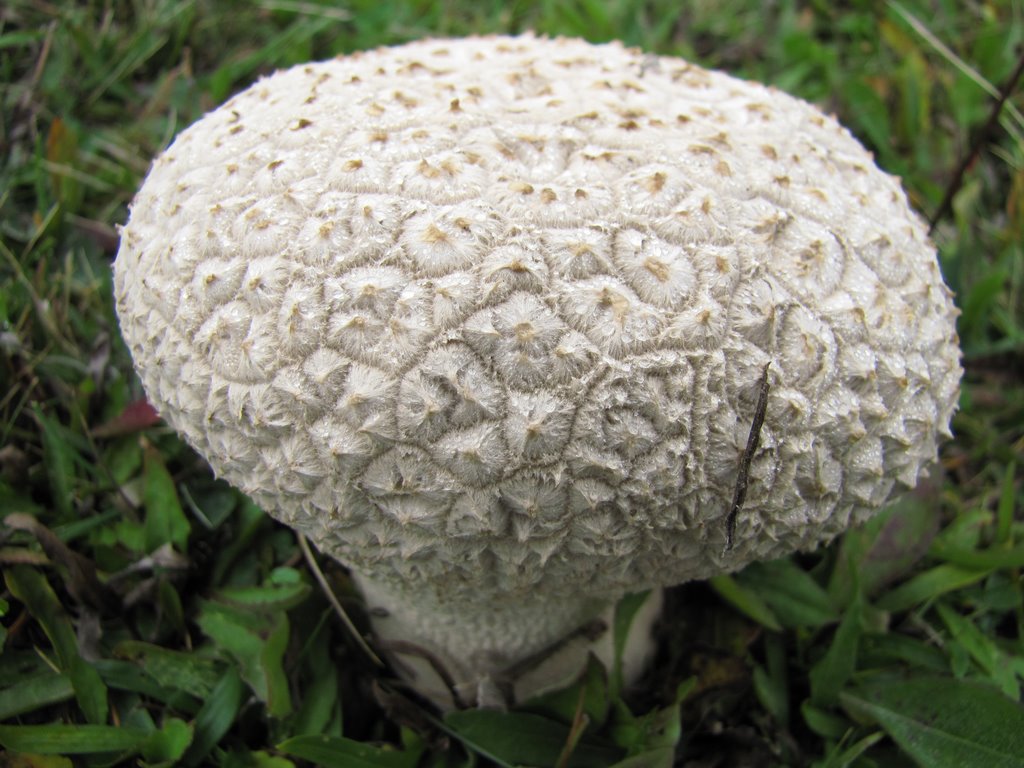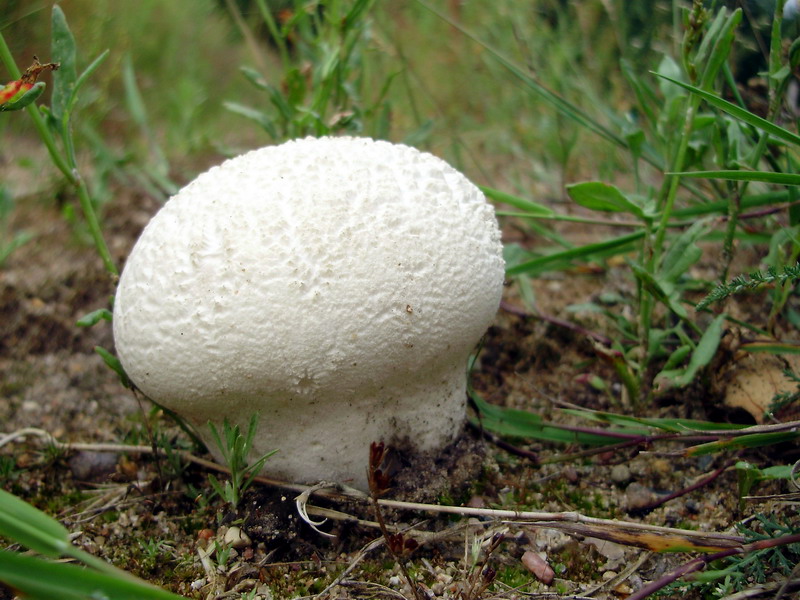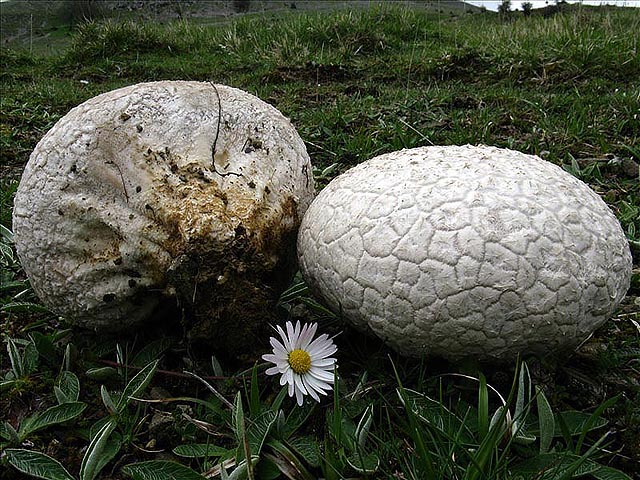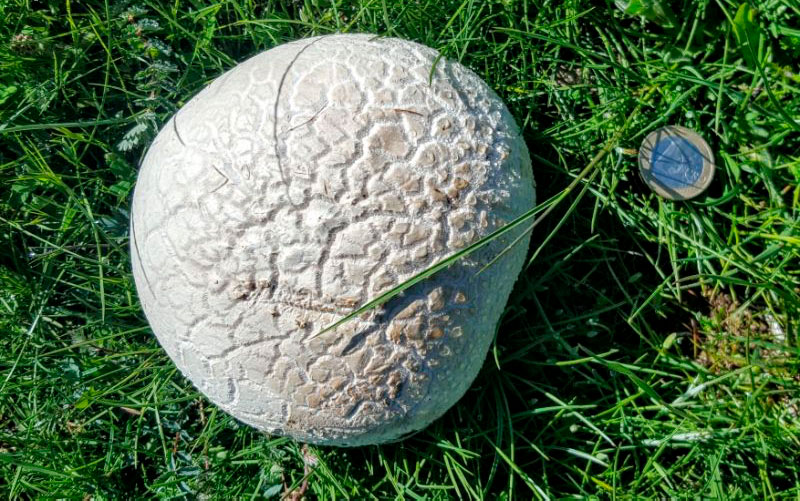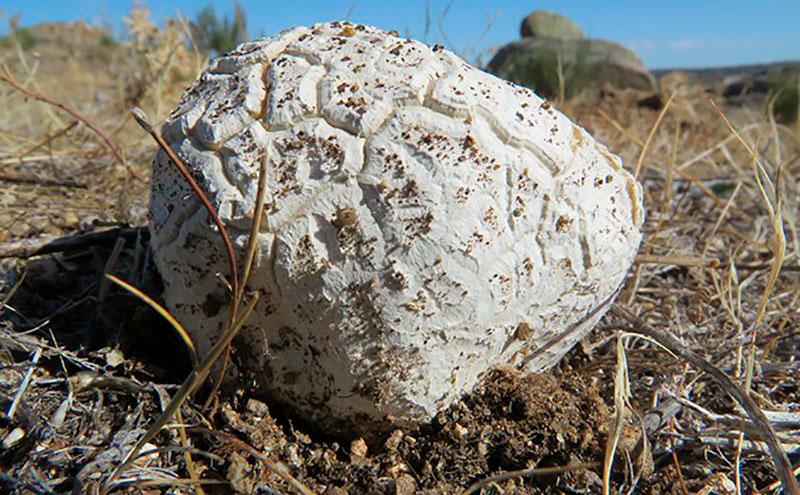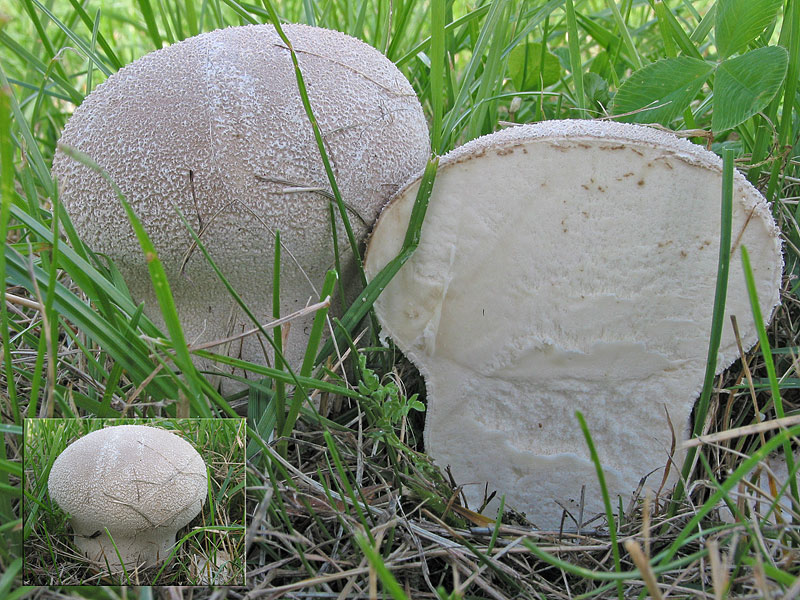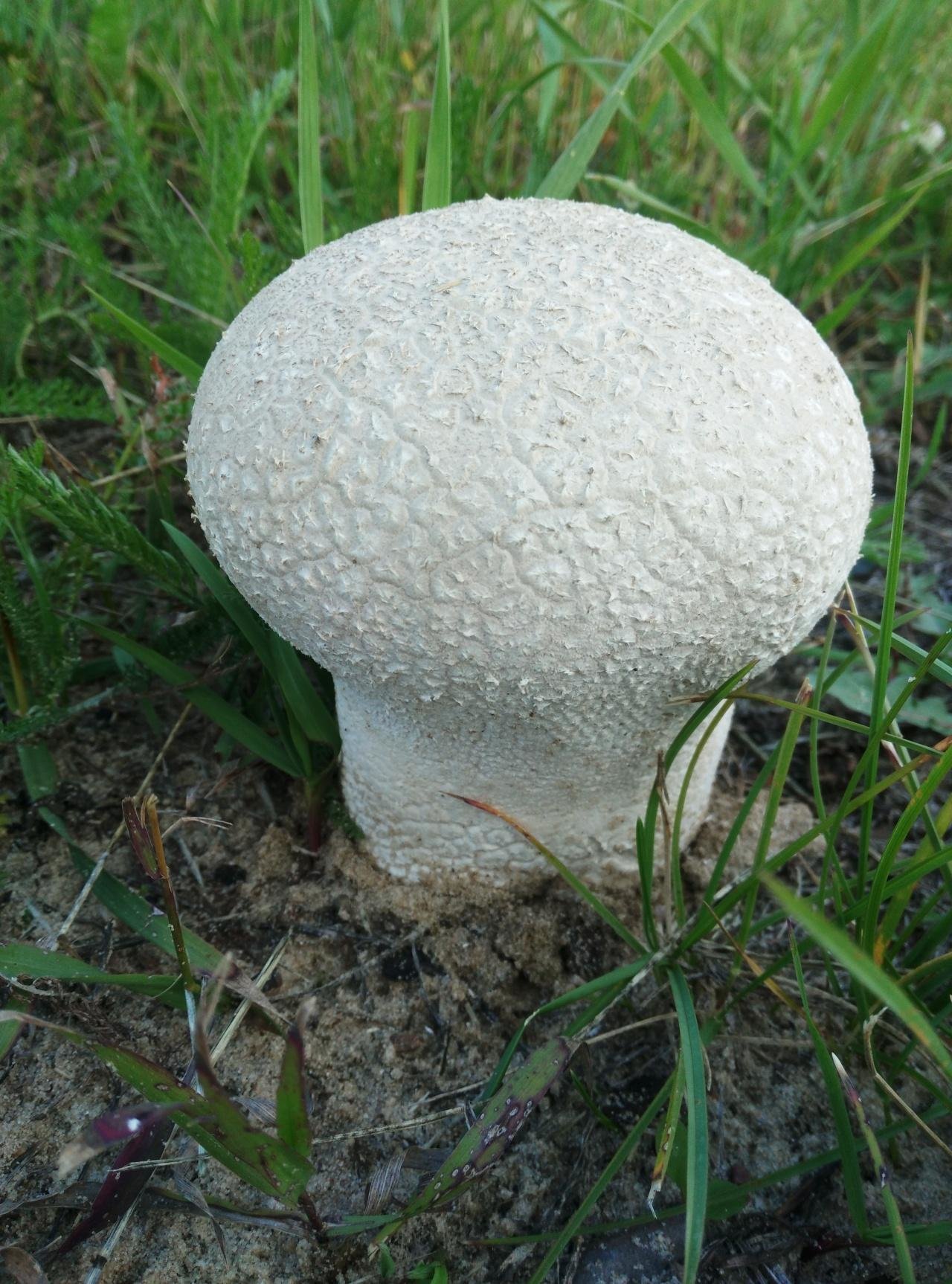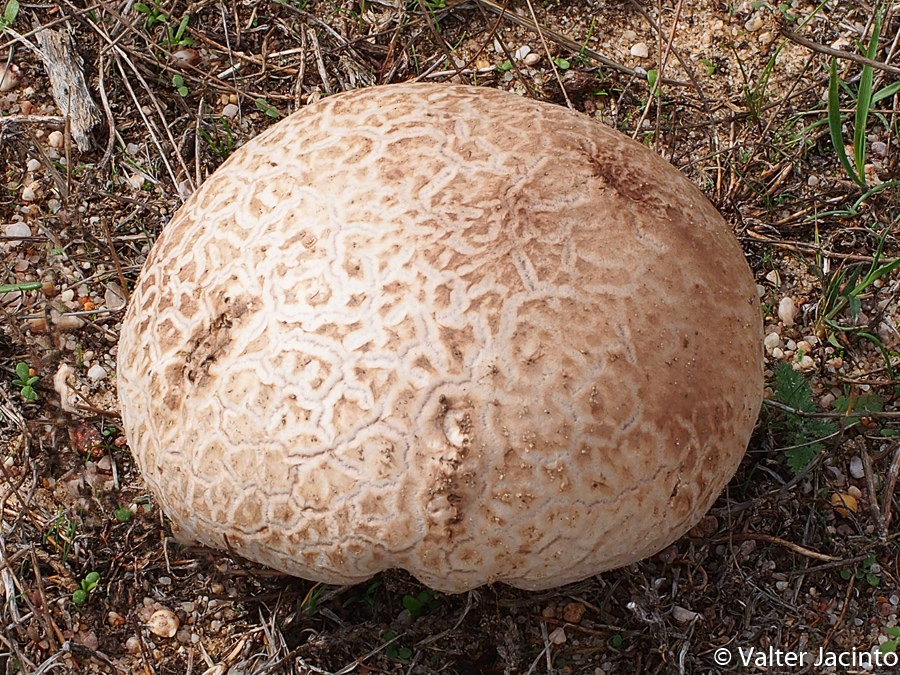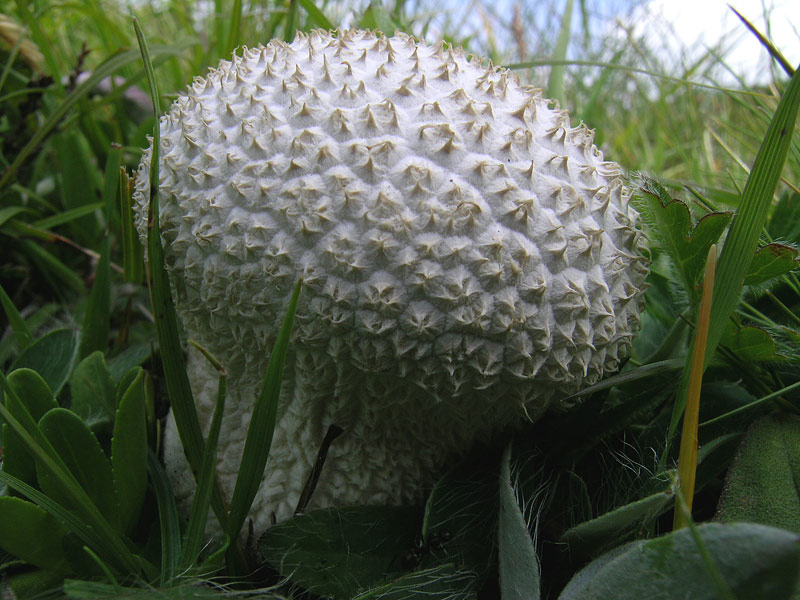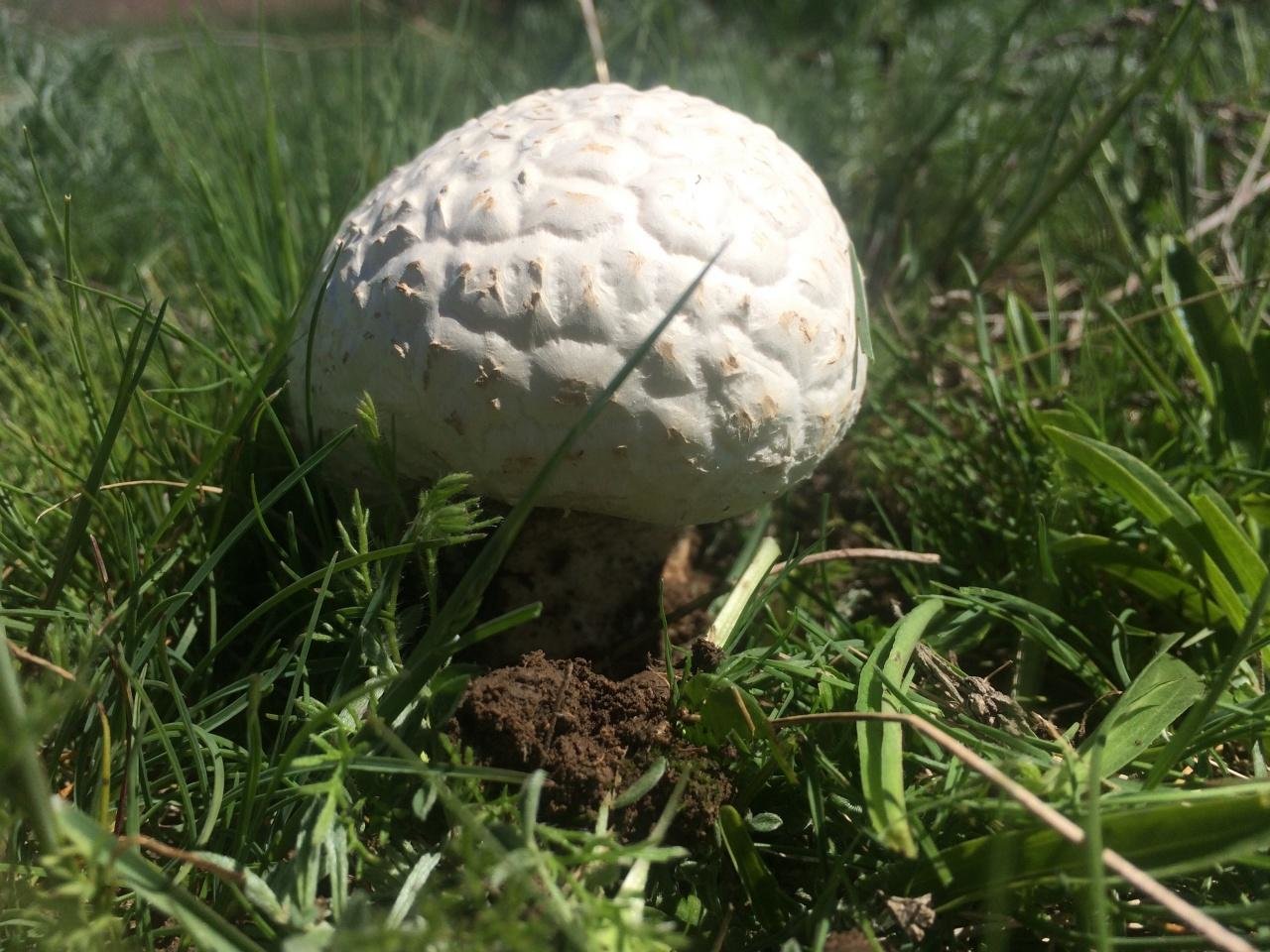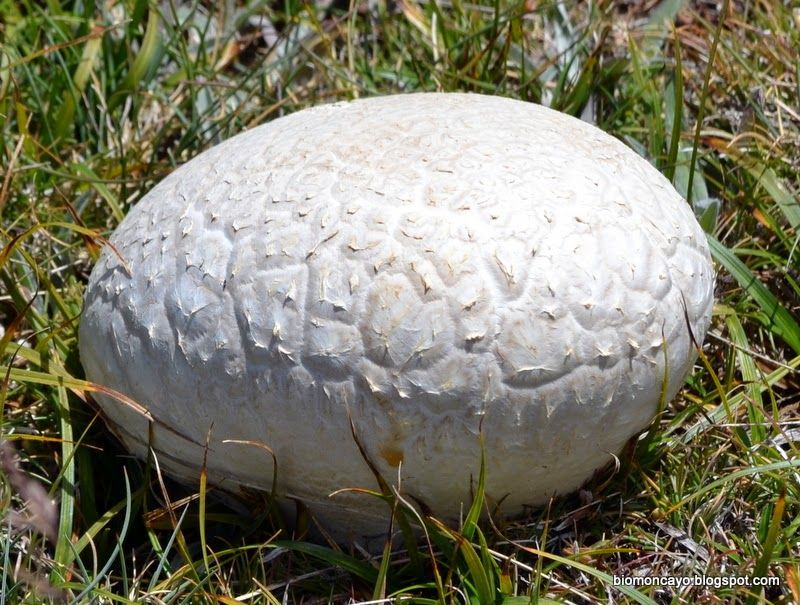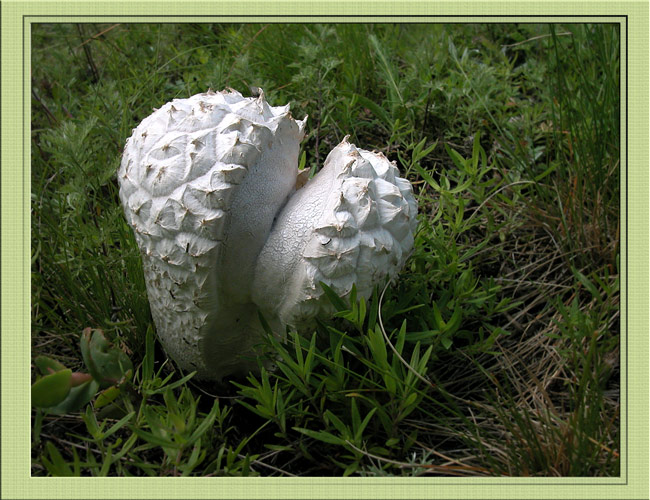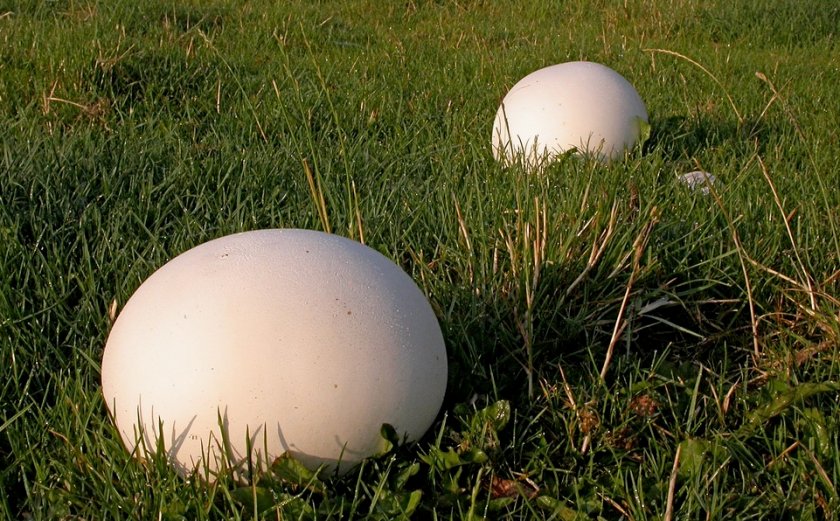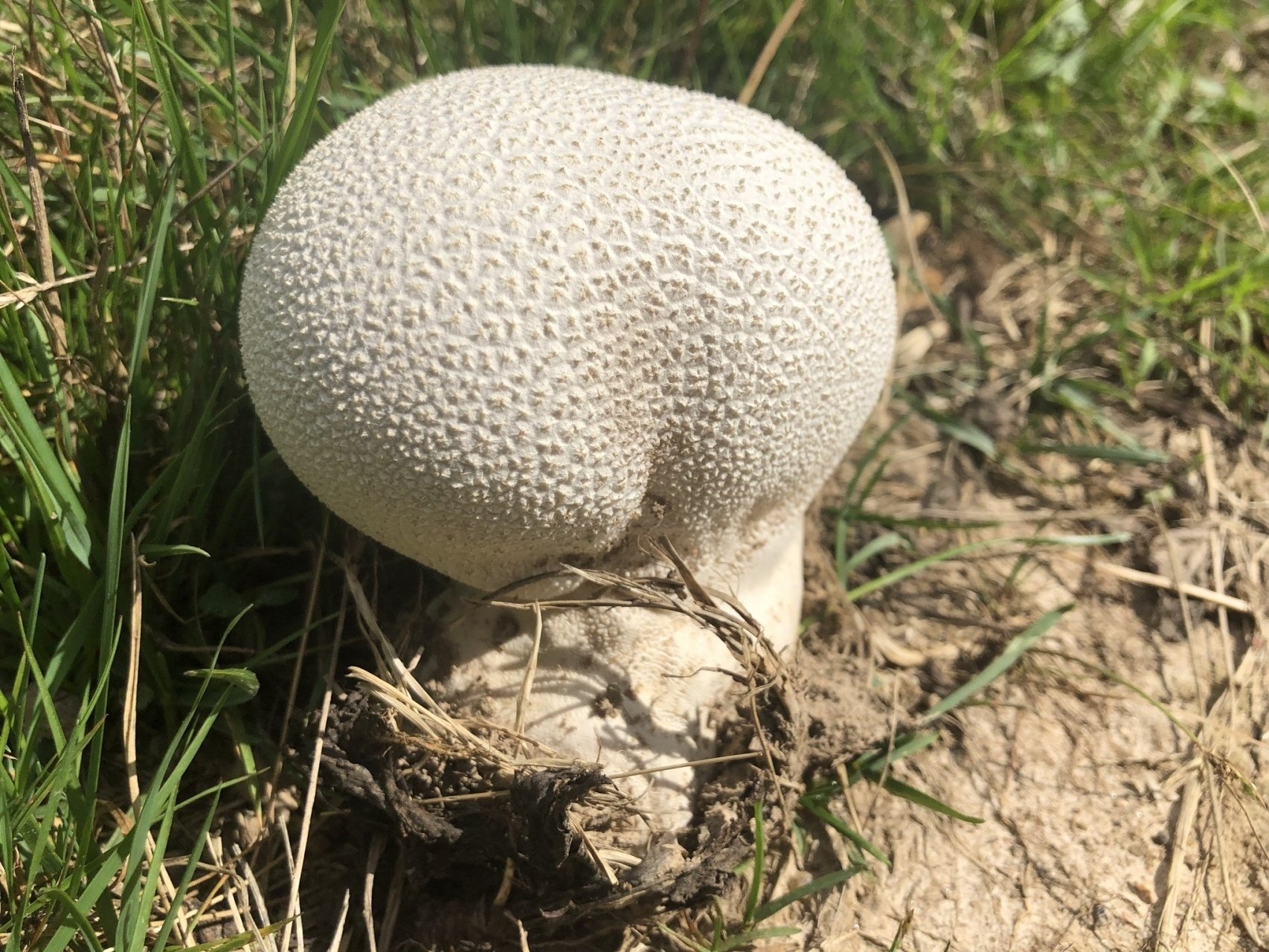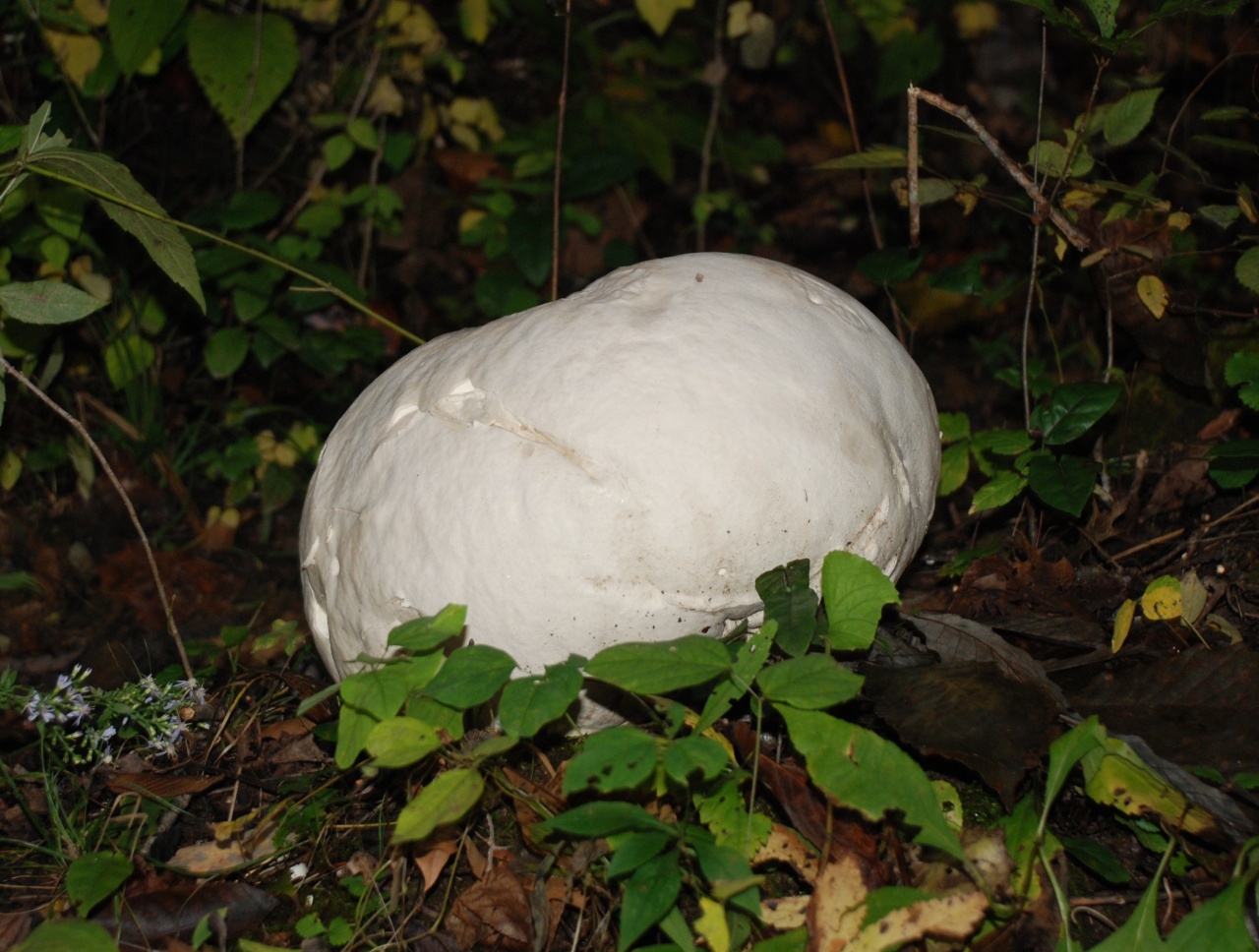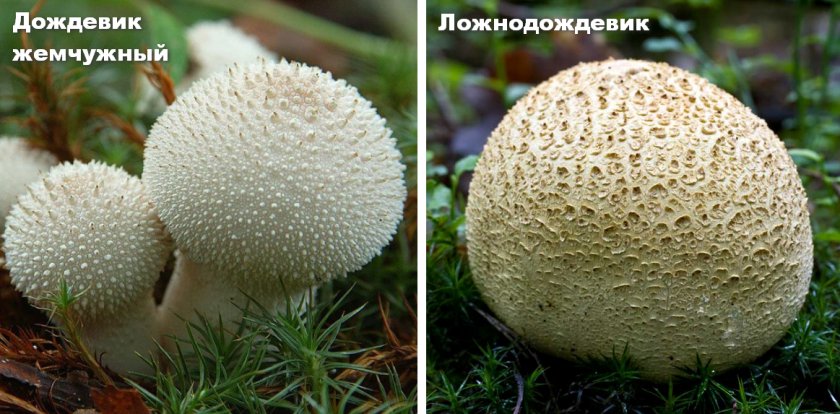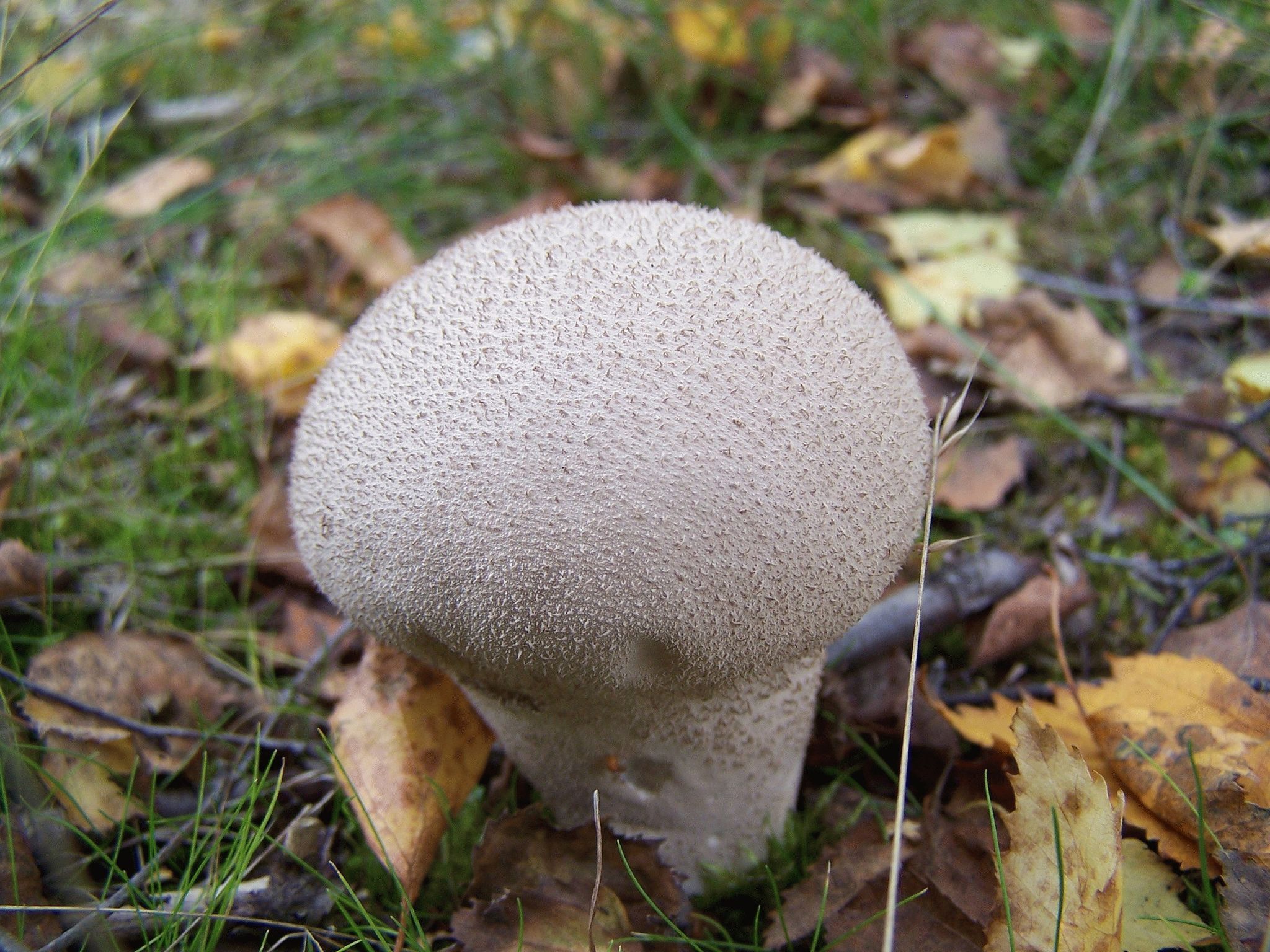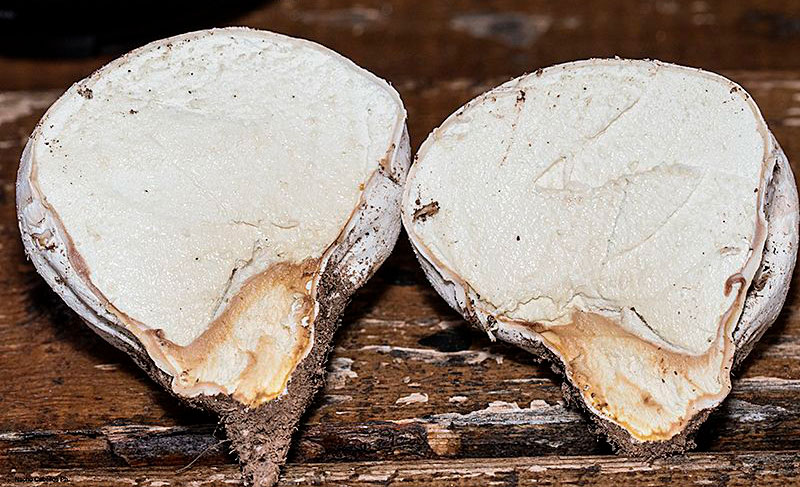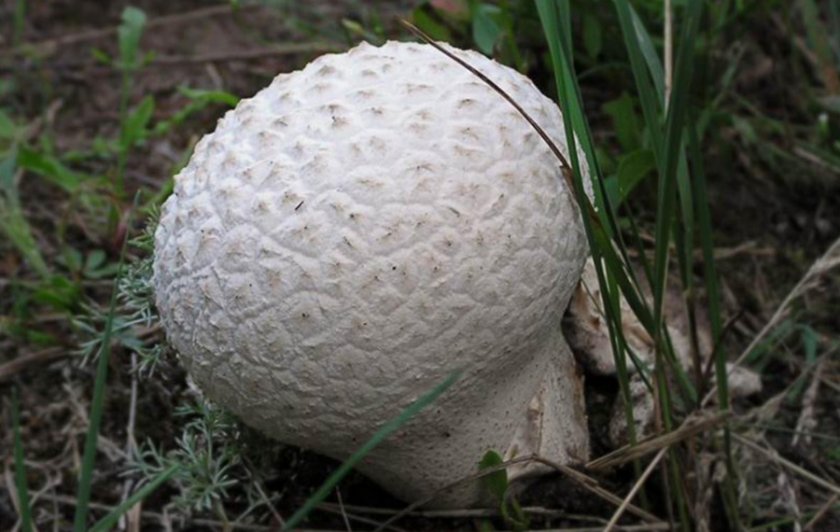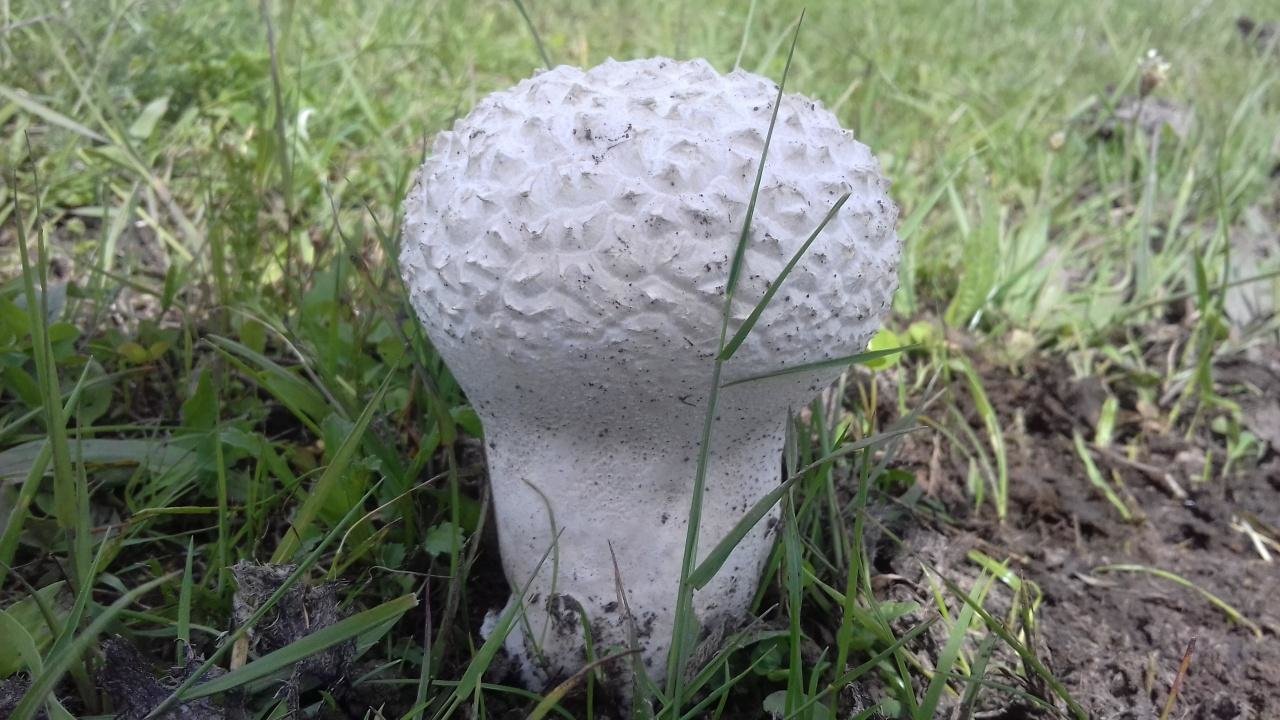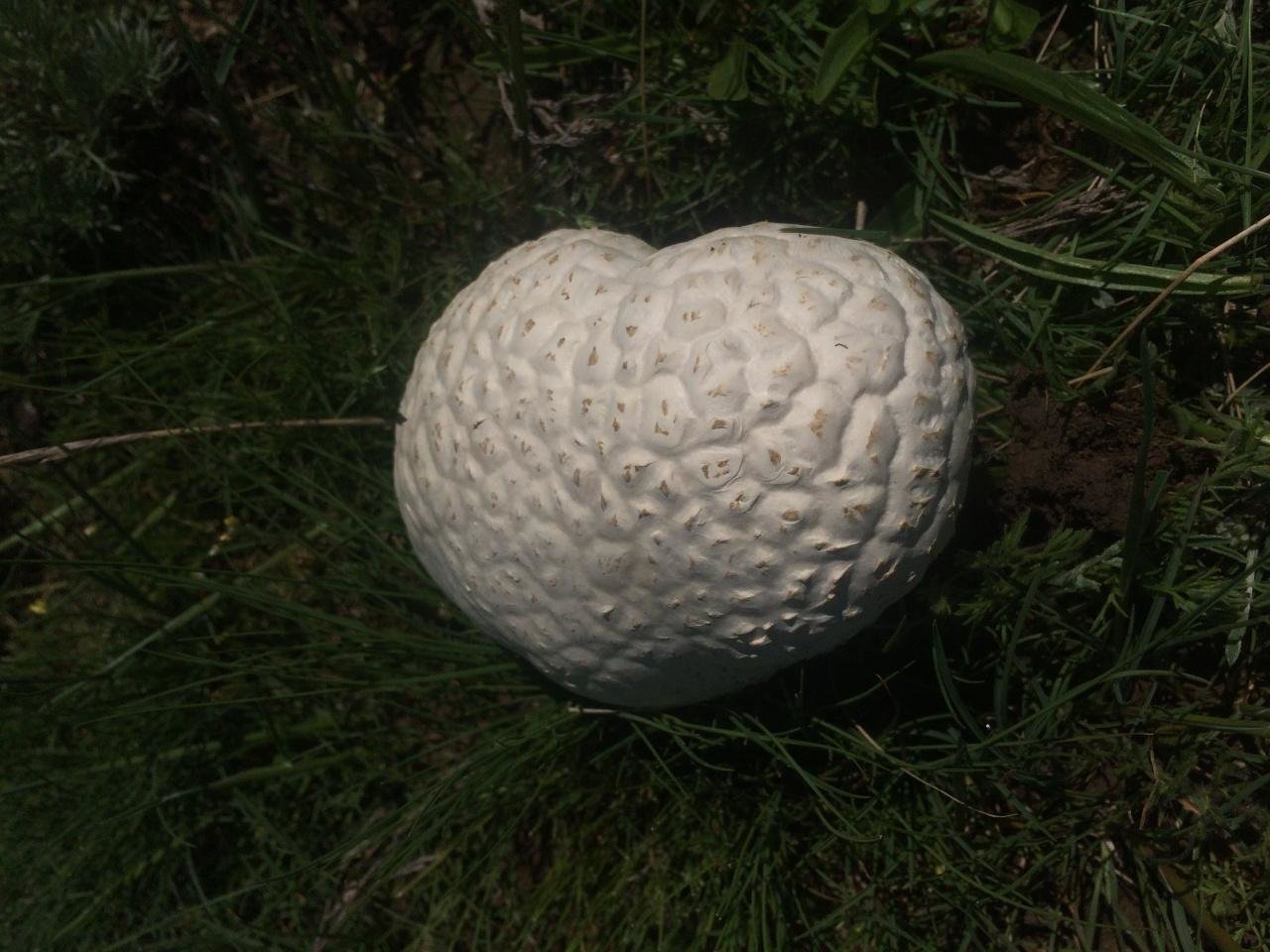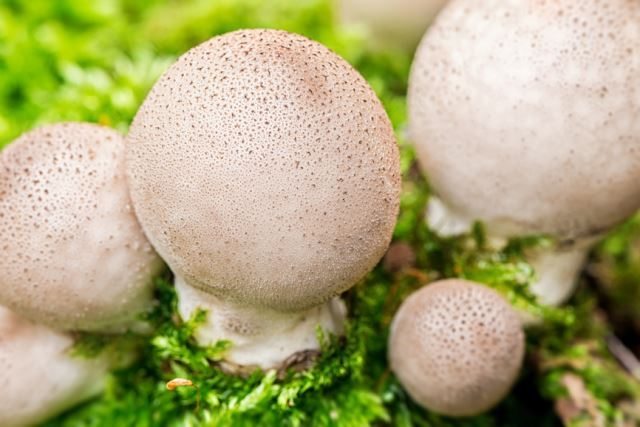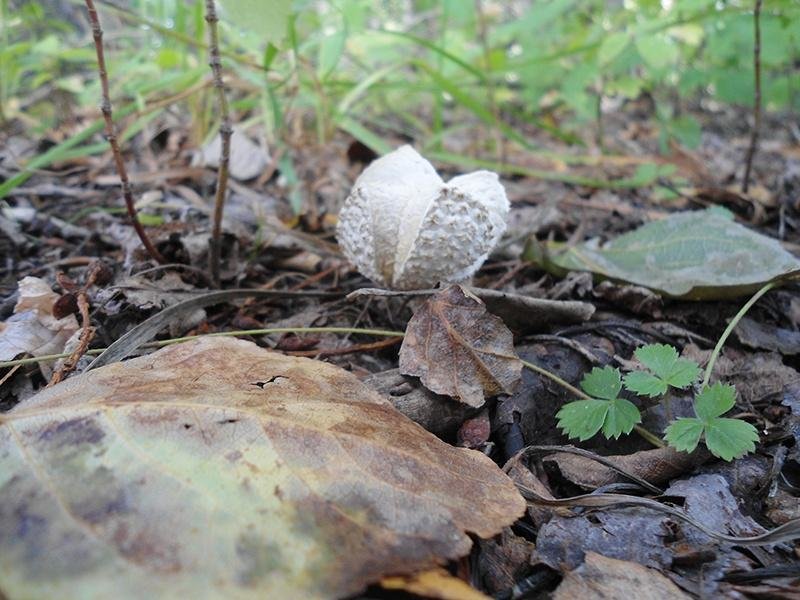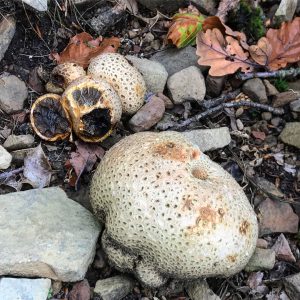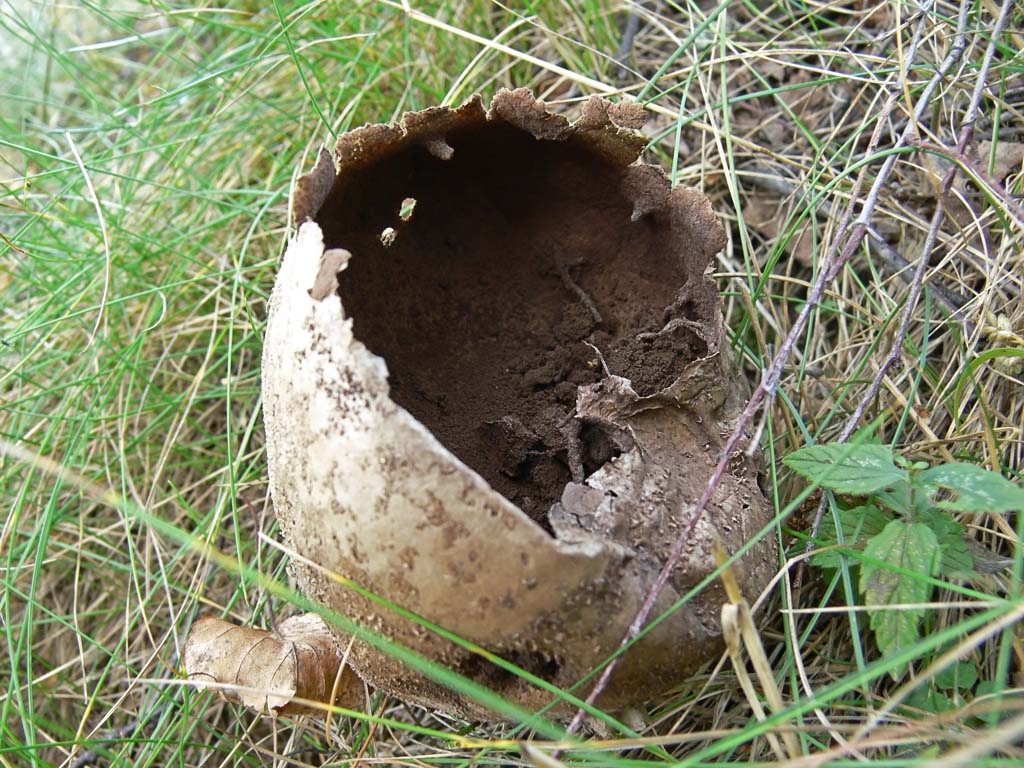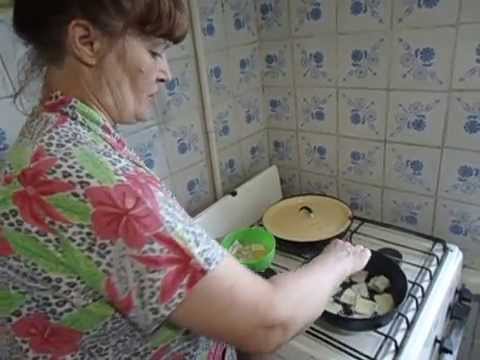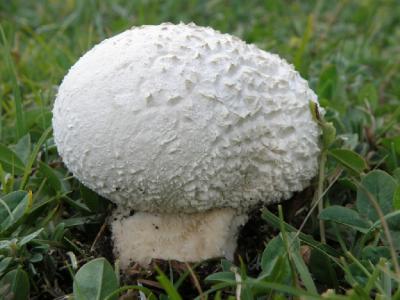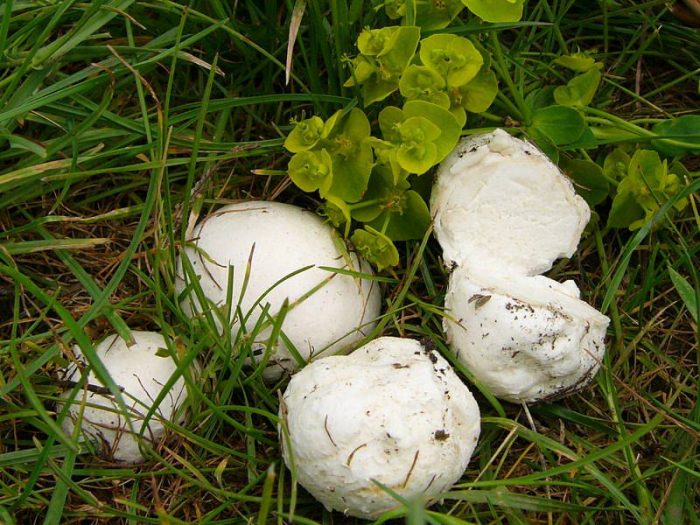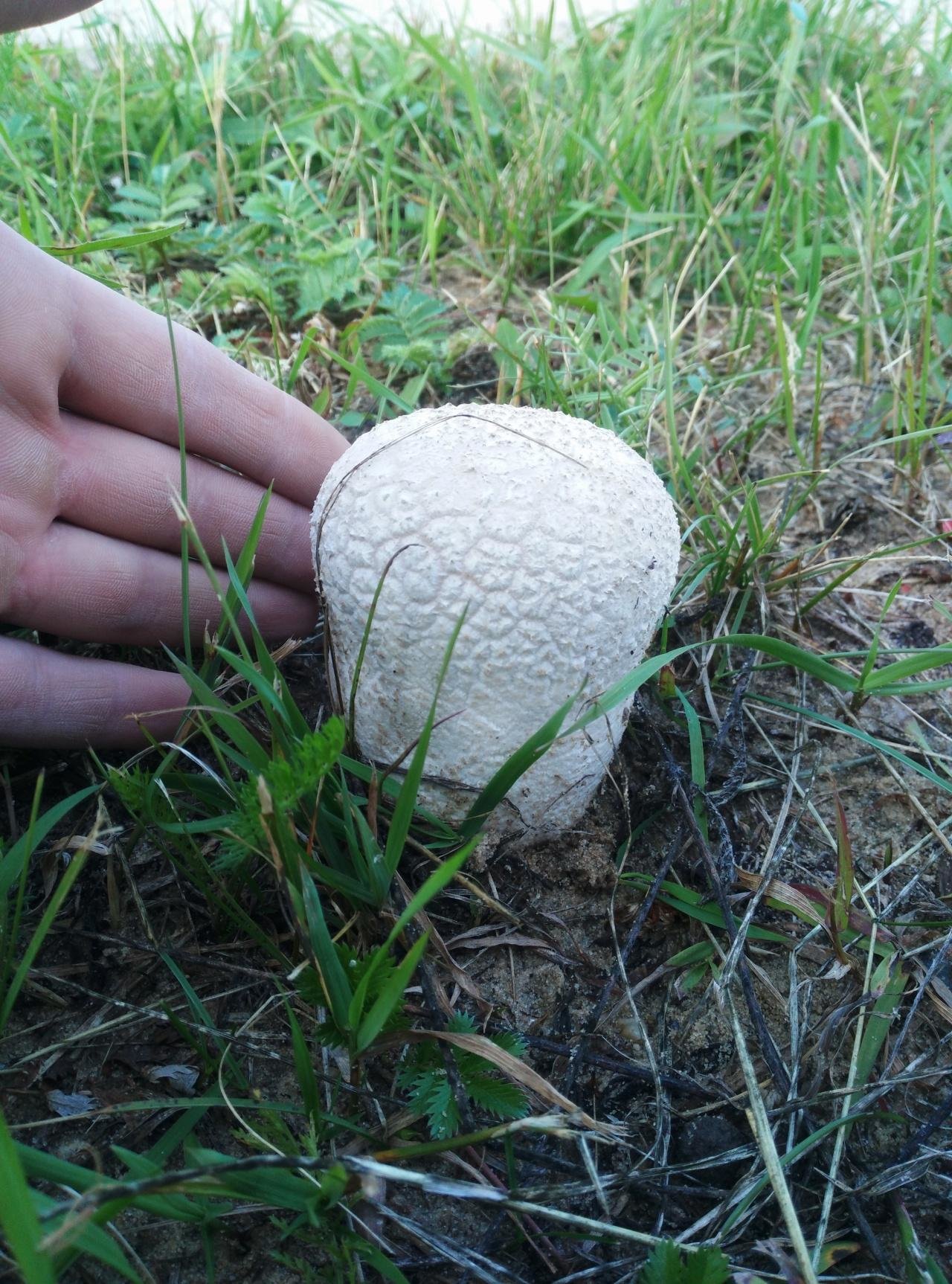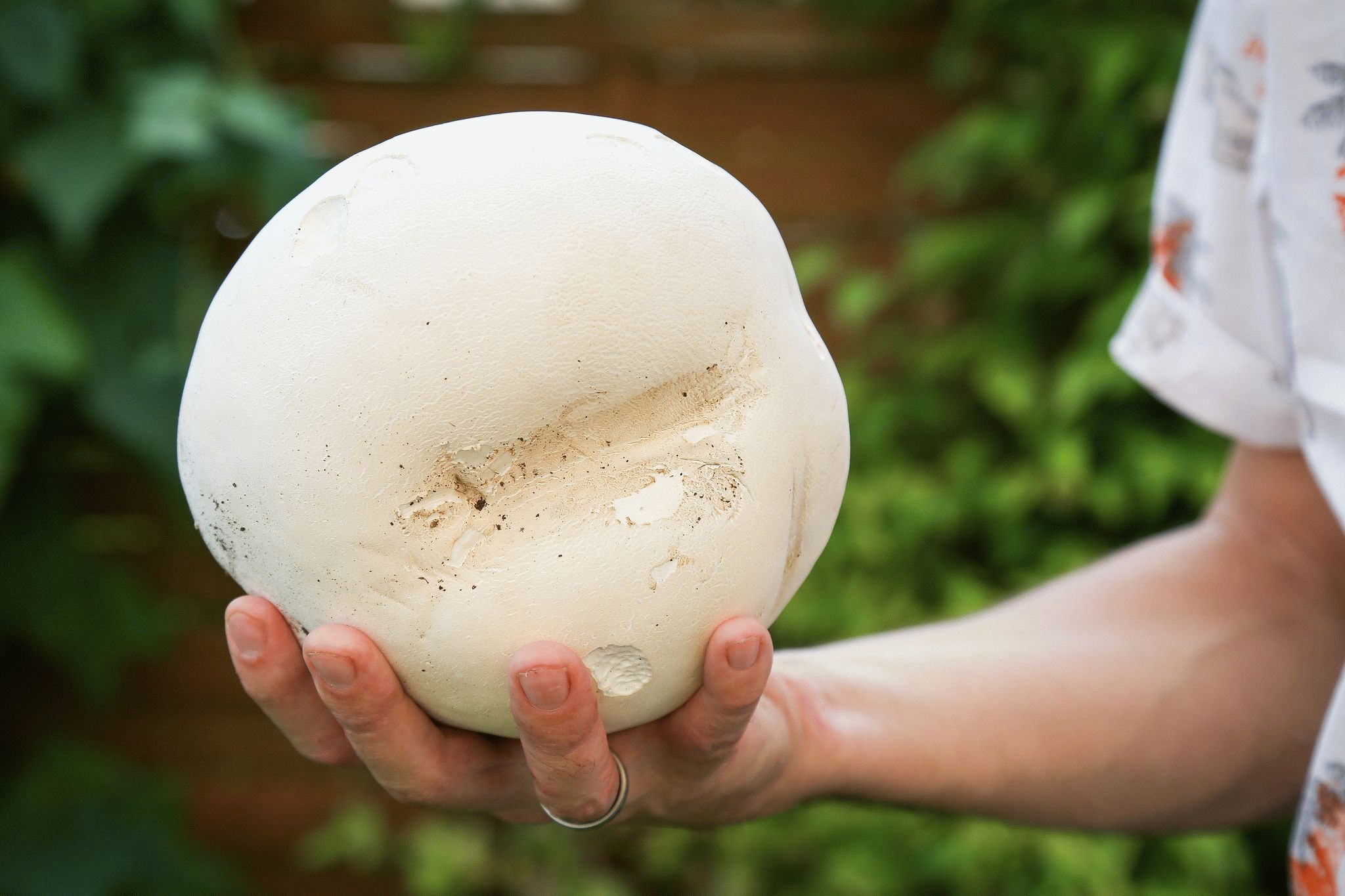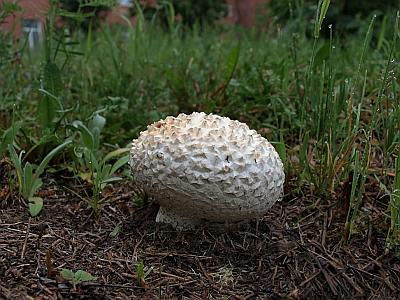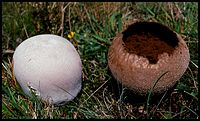Cooking recipes
3 easy and delicious recipes for cooking bigheads.
Helpful hints:
- do not cook from collected in contaminated areas;
- try to cook right away so that it does not stale;
- no need to cook before cooking, it will lose its qualities due to water.
Fried head mushroom
In sour cream
- Peel and wash vegetables, mushrooms.
- Cut the potatoes into wedges. Cook with salt. When ready, drain the water.
- Chop the mushrooms, fry in oil (25 minutes over low heat).
- Fry the onion in half rings (separately).
- Pour onions, boiled potatoes to the head, salt and pepper. Simmer for 15 minutes. over low heat.
- Add sour cream, stir and let simmer for 5 minutes.
- Sprinkle with herbs as desired.
Fried head mushroom
- Cut the washed, peeled mushroom into strips or cubes.
- Fry in oil. After 5-10 minutes. reduce heat.
- Chop onion, garlic and fry with mushrooms.
- There is also salt, pepper and sour cream.
- To cover with a lid.
- Sprinkle with herbs.
Soup-puree
- Peel and wash potatoes, onions, carrots.
- Wash, peel, chop the mushrooms.
- Put potatoes to boil.
- Fry mushrooms, carrots, onions.
- Pour into potatoes and add olives.
- Let it simmer over medium heat.
- Grate processed cheese.
- Add it to a saucepan, salt and pepper.
- Beat until smooth. Chill with finely chopped dill.
- Season with cream before serving (optional).
Baggy bighead mushroom and its photo
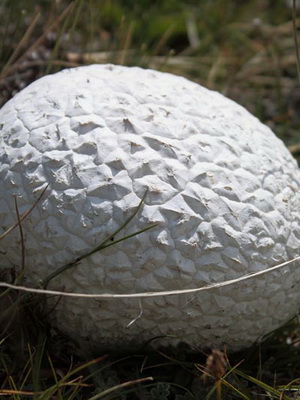

Family: Raincoats (Lycoperdaceae).
Synonyms: baggy bighead, bubble-shaped bighead, round bighead.
The description of the bighead mushroom has the following: the shape of the fruiting body is broad-ovate, pear-shaped, saccular. Sizes up to 20 cm high and 25 cm in diameter. At the base there is a kind of folded leg. The young baggy bighead is distinguished by a pure white thorny shell and white elastic flesh. With age, the shell turns yellow, then turns brown and cracks. The pulp becomes yellow-green, then dark brown. The upper part of the mushroom disintegrates, and from there the pulp with ripened spores falls out, which is carried by the wind like a tumbleweed. After that, only a cup-shaped base remains of the fruiting body, torn at the edges by 10-12 wide, outwardly wrapped blades, very persistent, tolerating any bad weather, becoming shiny.

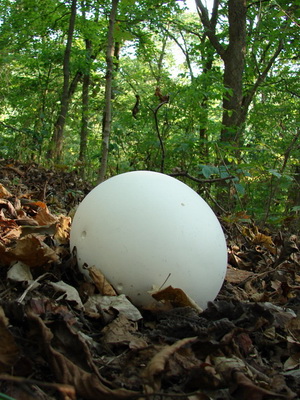
It is common on the edges of light deciduous and mixed forests, in meadows, pastures, in gardens; it grows on the soil, as a rule, singly, not often. Throughout Russia, except for the Far North, it bears fruit from May to early October.
Next, you can see the bighead mushroom in the photo, which show different types:

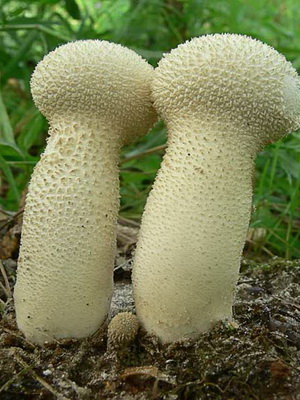

Similar species, if you look at the bighead in the photo, are not found in the forests typical of the middle strip. Taking into account the appearance, it has no similarity with other mushrooms.
Pharmacological and medical properties. The bactericidal effect of the methanol extract on gram-positive and gram-negative bacteria (Bacillus subtilis, Escherichia coli, Klebsiella pneumonia, Pseudomonas aeruginosa, Salmonella typhimurium, Staphylococcus aureus, Streptococcus pyogenes and Mycobacterium and smegmatis) was established. ... Antioxidant properties have been confirmed for the bighead.
A number of studies have also established its anticancer activity. So, in the head, a substance called calvacin (antibiotic) was found, which has a pronounced oncostatic effect, inhibiting the development of leukemia and other oncological diseases. Another peptide of the bighead, similar to the protein ubiquitin, inhibits breast cancer cell culture.
Biochemical studies have shown that this bighead is a natural hyperbioaccumulator of zinc and copper.
In folk medicine, mushrooms are used as an anti-inflammatory and hemostatic agent.For this, either thinly sliced plates of young fruiting bodies are used, or mature spore powder (as a powder). In addition, the extracts are used against cough, sore throat and hoarse voice.
Collect young, white on the cut fruiting bodies or dry spore mass from fully ripe mushrooms.
Edible at a young age, does not require prior boiling. Frying, broths, mushroom powder.
Danger from fungus
Toxicity manifests itself during long-term storage (it is recommended to store it for no more than two days in the refrigerator). Old bigheads contain toxins that are harmful to the body. Mushrooms accumulate harmful substances in a polluted environment, and their use poses a threat to humans.
- It is categorically impossible for a number of diseases:
- pancreatitis;
- a stomach or intestinal ulcer;
- gastritis in the acute stage;
- hypertension.
The healing properties of the giant bighead have been known for a long time and are still applicable today. And taking into account the taste, its huge size - this makes it a favorite among mushrooms.
You should definitely pay attention and try to cook or use for medicinal purposes.
Description of the mushroom
The giant golovach has a number of features:
- body diameter - 20-50 cm;
- the root shoot is fixed to the ground;
- weighing up to 10 kg;
- smooth and white outside;
- mature cracked, brownish;
- spores of olive brown tones;
- the pulp is snow-white, soft, has a pronounced taste and smell;
- with ripening, it acquires a green-yellow tone inside, later olive brown.
Where it grows
Prefers a moderate streak with nutrient-rich soil. The most suitable growing environment: woodland (mixed, deciduous), ravine with high humidity, pasture with tall grasses, field, personal plot. Active growth from June to September.
Edible or not
Young specimens have excellent taste and are used in cooking. They are excellent fried, and also make the first, second courses, snacks, fillings, and dry. The old ones do not use, because of the toxins that will lead to poisoning.
Giant Bigfoot (Calvatia gigantea)
on>Systematics:
- Department: Basidiomycota (Basidiomycetes)
- Subdivision: Agaricomycotina
- Class: Agaricomycetes (Agaricomycetes)
- Subclass: Agaricomycetidae
- Order: Agaricales (Agaric or Lamellar)
- Family: Agaricaceae (Champignon)
- Genus: Calvatia
- Species: Calvatia gigantea
Other names for the mushroom: Giant raincoat
Other names:
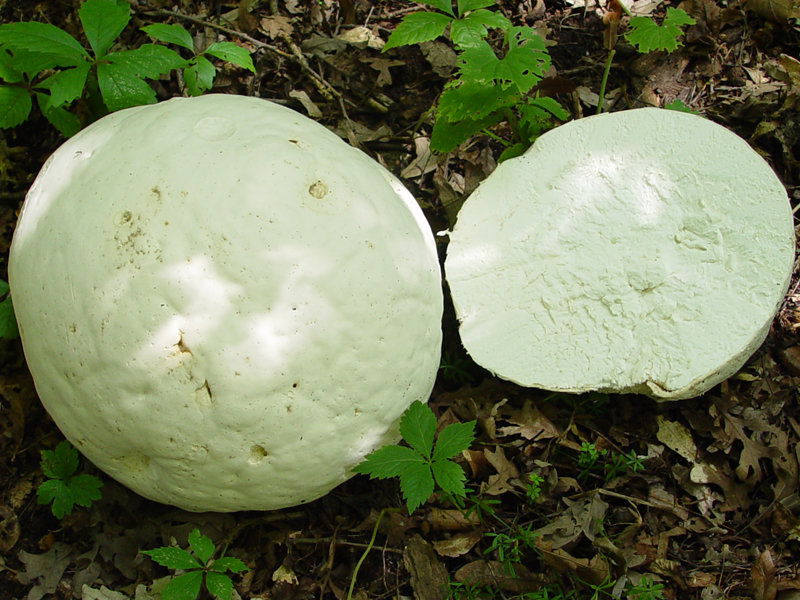
Giant golovach is a species of mushrooms from the genus Golovach of the Champignon family.
Langermania (bighead) giant (Calvatia gigantea) - the body of the mushroom fruit has the shape of a ball or egg, flattened, sometimes up to 50 cm in diameter, at the base there is a thick tapered mycelial cord. Exoperidium is paper-like, very thin, quickly cracks into irregular pieces and disappears. The shell is thick and brittle, breaks into pieces of irregular shape and falls off, revealing a cotton-like inner pulp (gleba).
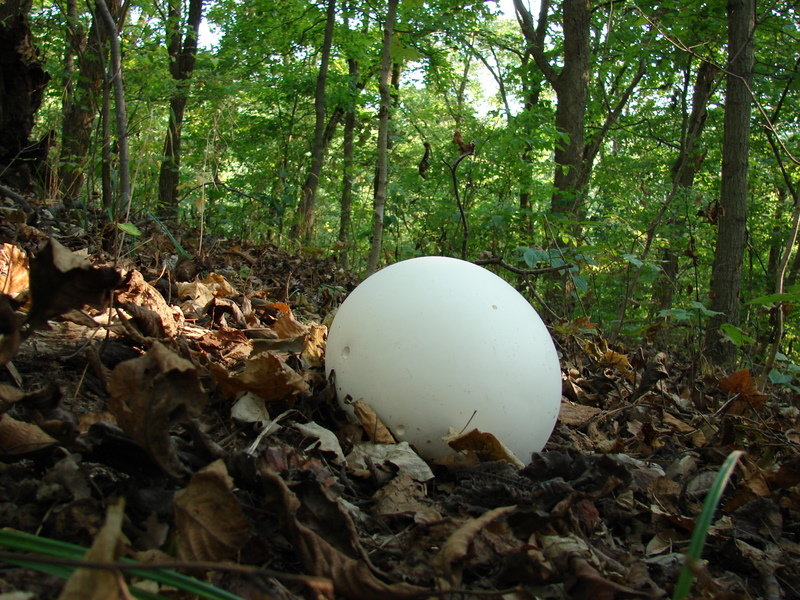
The pulp (gleba) is initially white, then yellow-green, when it is fully ripe it becomes olive brown. The color of the fruiting body outside is initially white, then gradually turns brown over time.
Spores are the most valuable medicine. They show a high antitumor effect. A medicine called calvacin was made from the mushroom, the properties of which were tested on animals with cancer and sarcoma. This drug is active against 13 types of studied tumors out of 24. It is also used in folk medicine for the treatment of smallpox, laryngitis, urticaria, has anesthetic properties similar to chloroform.
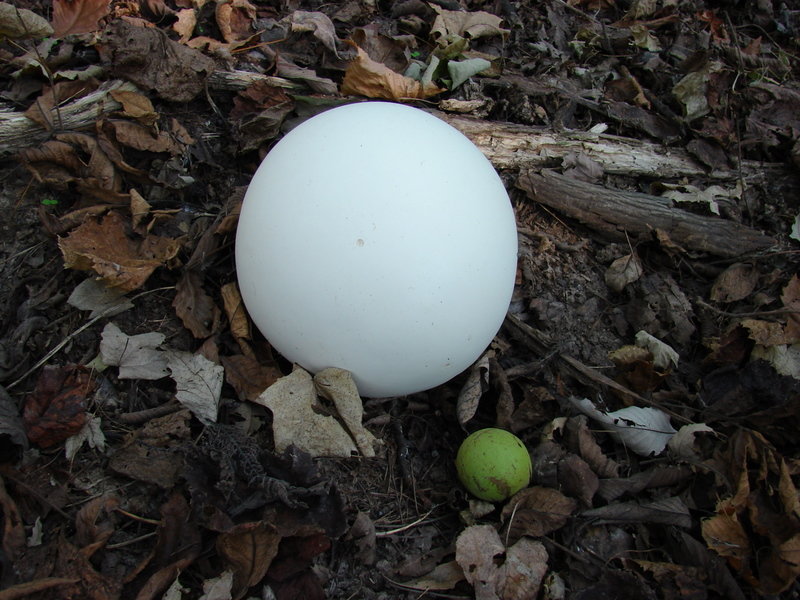
Distribution - the mushroom can be found almost everywhere, but most often in the temperate zone. It is found alone, but having appeared in one place, it may disappear at all or not appear for a very long time. This type is called "meteor".On the territory of Russia, it was found in the European part, in Karelia, in the Far East, in Siberia in the Krasnoyarsk Territory. Also in the North Caucasus. Grows in mixed and deciduous forests, meadows, fields, pastures, in the steppes one by one.
Edible - the mushroom is edible at a young age, while the flesh is firm, firm and white.
Video about the giant Golovach mushroom:
Mushroom photo Giant Golovach from questions in recognition:
| Latin name: | Calvatia |
| English name: | To be specified |
| Domain: | Eukaryotes |
| Kingdom: | Mushrooms |
| Department: | Basidiomycetes |
| Class: | Agaricomycetes |
| Order: | Agaric |
| Family: | Champignon |
| Genus: | Golovach |
| Edibility | Edible mushroom |
Baggy golovach
| Group: | Marsupials |
|---|---|
| Plates: | Absent |
| Colour: | Grayish white, brown |
| Info: | Covered with wart growth |
| Department: | Basidiomycota (Basidiomycetes) |
|---|---|
| Subdivision: | Agaricomycotina (Agaricomycetes) |
| Class: | Agaricomycetes (Agaricomycetes) |
| Subclass: | Agaricomycetidae |
| Order: | Agaricales (Agaric or Lamellar) |
| Family: | Agaricaceae (Champignon) |
| Genus: | Bovistella |
| View: | Bovistella utriformis (Baggy Golovach) |
Another representative of the genus of raincoats, often overlooked by fans of mushroom hunting. And it’s in vain - after all, at a young age, this “spiked ball” is able to decorate any dish, it is not for nothing that raincoats are called truffles' younger brothers.
Golovach in garden design
The flower head can rightfully be ranked among the most original shrubs in the form of flowering and among the most spectacular large crops that can bring ideal spheres to the garden design. It is appreciated primarily for its exotic capitate inflorescences, but large leaves and a spectacular crown are wonderful as well.
The flower head looks great in splendid isolation, as a soloist against the background of ground cover and lawn meadows or on flower beds and in the front garden. But by no means worse it will look in groups with both other compact and rather large shrubs and woody ones. It can be used for edging, as a contrasting shrub for plants with clipped and small-leaved crowns, to create bright compositions with different shades of greenery. The flower head is especially good in compositions where the spheres of its inflorescences support similar forms of partner cultures - sheared boxwood spheres, inflorescences of hydrangeas, decorative bows, etc.
How to raise a giant head
One giant like a raincoat can feed an entire family for dinner. To find a giant raincoat (bighead), you do not have to look for it in the forest or in the store, you can grow the mushroom yourself. Mycelium will help in this matter. Mycelium is a fungal vegetative body, consisting of hyphae - thin, branched filaments. Under natural conditions, one gram of forest litter contains up to 35 kilometers of mycelium. A shady place is chosen for future sowing. Places in raspberries, under trees, in grass or bushes are suitable.
The main requirement for all these places is that the temperature at any time of the year, except for winter, should be at least 14 degrees, but not more than 29 degrees. The mushroom bears fruit every 20 days already 4 weeks after planting. When a planting site is selected, the soil must be loosened and the mycelium of the giant slicker sprinkle evenly. Then you need to cover the mycelium with a seven-centimeter layer of earth and water the planted raincoat.
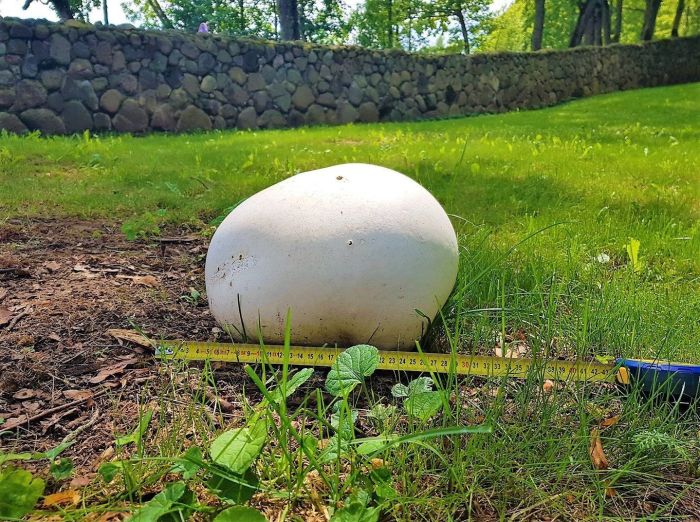 How to raise a giant bighead.
How to raise a giant bighead.
Giant golovach - useful properties
These mushrooms contain a beneficial substance called calvacin. It is used by traditional medicine doctors in the treatment of kidney, leukemia and tumors. A giant raincoat is used to make a flu vaccine. The fungus can help with laryngitis, smallpox, and hives. In case of bleeding, the cut giant slicker and its spores have a healing effect. There are many decoctions and preparations from this mushroom. Preparations containing fungal spores cleanse the body of toxins, metals and radionuclides.The medicine from the spores of the giant bighead is used for diabetes, pleurisy, pulmonary tuberculosis and bronchial asthma.
Description of the mushroom
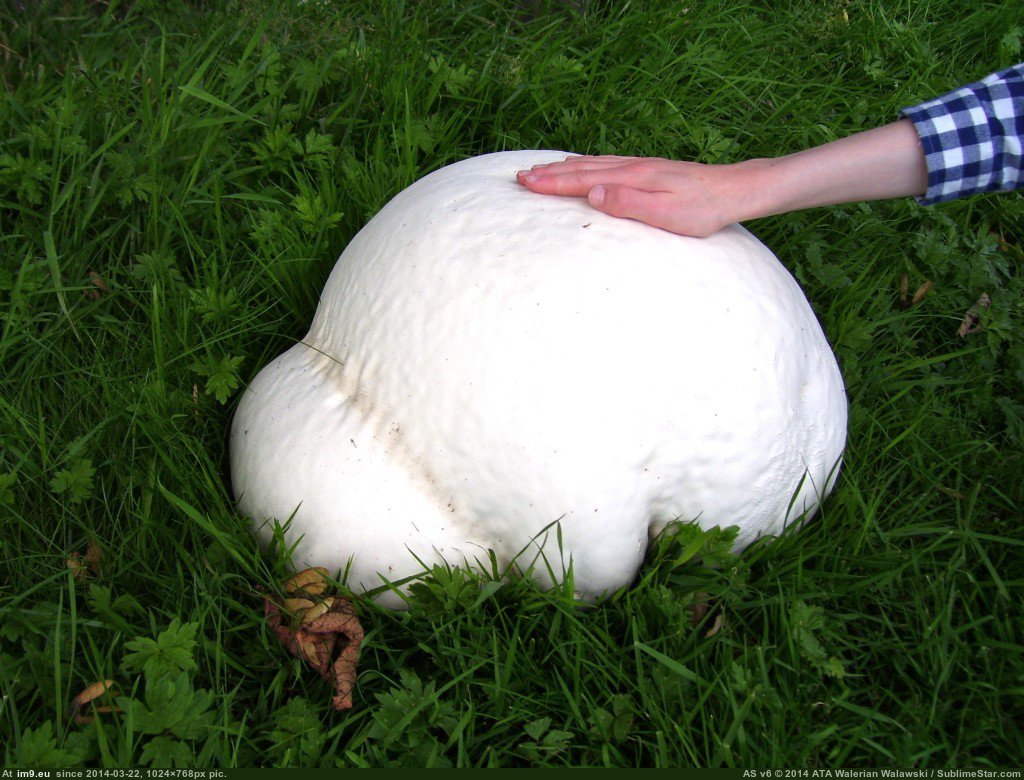
Germinates singly or in groups. Often it has a spherical, oval, ovoid shape of the fruiting body, slightly flattened. The head mushroom grows up to 10 - 50 cm in diameter. In a young specimen, the body is white, as it matures, it darkens, cracks, acquires various dark shades of yellow or brown. The pulp or gleb at the beginning of growth is white, elastic, after ripening, cotton-like, loose, pale green or brown in color. The leg is white, thick, cylindrical in shape, it can thicken or narrow to the ground, in many species the leg is short, in others it can grow up to 15 - 20 cm. The surface of the cap of the bighead can be smooth or rough, when broken, pieces of unequal shape with torn edges are formed.
A characteristic distinctive feature is that during ripening, the fruit body almost completely cracks and falls off. The spores of the fungus are brown in color.
For cooking, only young mushrooms with white, dense, elastic pulp are used.
Baggy golovach (round, bag-shaped): photo and description, medicinal properties
| Name: | Baggy golovach |
| Latin name: | Bovistella utriformis |
| Type of: | Edible |
| Synonyms: | Golovach is bubble-shaped, Golovach is round, Golovach is saccular, Golovach is round, Golovach is bell-shaped, Raincoat hare, Calvatia utriformis |
| Specifications: |
|
| Systematics: |
|
The baggy golovach is an edible representative of the Champignon family. The species is found infrequently, grows in single specimens at the edge of the forest, fields, meadows and pastures. Since the mushroom has similar twins, you must carefully read the description, view photos and videos.
What does a baggy bighead look like?
The fruit body reaches a diameter of 15-20 cm. The warty surface is fine-grained, painted in a whitish color, with age, the color changes to gray-brown. As it grows, the rounded fruiting body cracks and the upper part collapses. From there, the pulp falls out with spores, which scatter in the wind and give life to a new mushroom generation.
In young specimens, the flesh is snow-white, with a pleasant mushroom taste and aroma. Further, it turns brown or olive-brown and takes on an unpleasant odor.
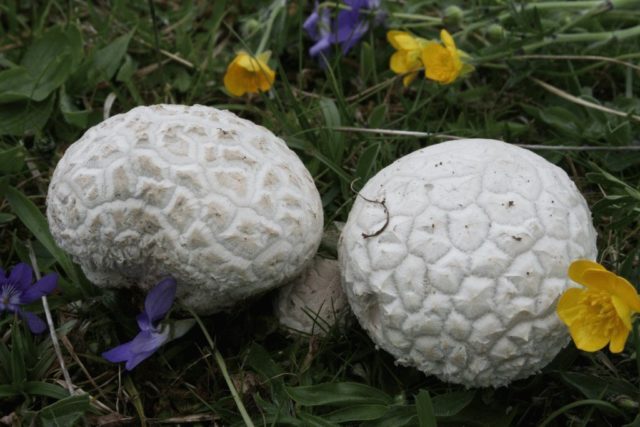
You can recognize the view by the lumpy surface
Where and how it grows
The baggy head prefers to grow in open, sunny places. It can be found in fields and meadows, along roads, in city parks and squares. Distributed throughout Russia, bears fruit throughout the warm period.
Is the mushroom edible or not
The mushroom belongs to the 4th group of edibility. In cooking, only young specimens with white flesh are used. The mushroom is valuable among cooks, as it contains carbohydrates, a large amount of protein, micro- and macroelements, vitamins.
Before cooking, the mushrooms are washed, peeled and boiled. It can then be used to make soups, fried and stews.
Old specimens are not eaten, as they, like a sponge, absorb toxins and can harm the body.
The healing properties of baggy bigheads
Due to the rich mineral and fortified composition, the baggy bighead is widely used in medicine. One of the main medicinal properties is antibacterial action. On its basis, drugs are made against salmonella, streptococci and staphylococci.
In folk medicine, baggy bighead is used to eliminate the following ailments:
- improves vision;
- strengthens the heart muscle;
- enhances immunity;
- improves the functioning of the digestive system;
- improves the condition of teeth, bones and joints.
Despite the fact that the baggy bighead benefits the body, it also has contraindications. In large quantities, it is not recommended to use it for hypertensive patients, people with pancreatitis, peptic ulcer disease and with exacerbated gastritis.
Since the mushroom is a heavy food, it is necessary to refrain from it for children under 8 years old and not eat it 2-3 hours before bedtime.
Doubles and their differences
The baggy golovach, like any forest dweller, has similar twins. Such as:
- Blackberry-prickly puffball is an edible species that grows in small families in deciduous forests. The hemispherical fruit body is covered with closely growing thorns. The pulp is dense, whitish, with age it becomes dark brown. In cooking, only young specimens are used.
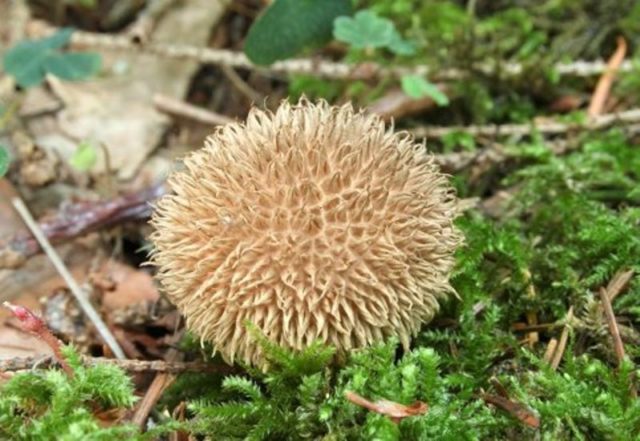
A rare species that resembles a hedgehog
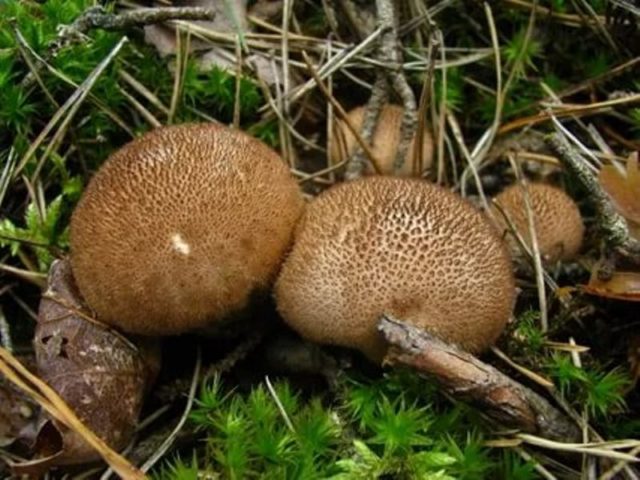
The species causes poisoning when eaten.
Conclusion
Baggy golovach - belongs to the 4th group of edibility. Due to its beneficial properties, this representative of the mushroom kingdom has found wide application in cooking and folk medicine. But since the species has contraindications, it is necessary to consult a doctor before use.
Conditions required for the flower head
The western flower head can be grown both in open soil in the form of an ordinary flowering accent of a landscape type, and can be planted in containers to decorate terraces, balconies, and recreation areas. It is a surprisingly unpretentious plant that adapts very well to various forms and growing conditions.
The flower head has a good ability to adapt to places with different lighting conditions. He will be comfortable both on sunny and semi-shaded areas in the garden, and any of the moist and cultivated soil is suitable for them (not even very fertile). The flower head feels great in dry areas, especially if it is watered during a drought, but it is best suited for decorating places with high humidity and fresh soil.
The unpretentiousness and lack of regular care necessary for this shrub are its important advantages, which only make this unique plant even more promising. Planting the bighead is best done in the middle and late spring, so the bushes are much better adaptable and less capricious.
The flower head is completely winter-hardy and will not cause trouble in the middle lane. Young shoots can freeze out, but the bushes quickly recover.
Flowers of the Western Flower Head. Les
Description of the baggy bighead
The diameter of the fruiting body of the baggy bighead is quite large - 10-15 centimeters, and in some cases it reaches 20 centimeters. The shape of the mushroom is round, flattened from above, slightly narrowed towards the base. The surface of the sack-shaped head is fine-grained, fissured.

The color of young mushrooms is light, white, eventually turns gray-brown. Mature fruiting bodies crack and tear in the upper part, as a result, they begin to resemble wide tubercles with bent, ragged edges.
The flesh of a hare raincoat is soft, at first white, and with aging it becomes olive-brown or brown. The pulp has a pleasant mushroom aroma. Chestnut brown spore powder.
Places of growth of baggy bighead
The baggy heads begin to bear fruit at the end of May and continue until September. The peak of fruiting occurs in mid-July. These mushrooms grow in glades, forest edges, meadows, pastures. They settle on the soil. They are met infrequently, singly.
Varieties and twins
The genus of bighead mushrooms has more than 30 species. The most common are 3 types: giant, baggy, oblong. Unknowingly, many confuse this mushroom with raincoats, porhoviks, although this is not scary, since these species are also edible.
Round baggy head

Another name for this species is a bubble-shaped, rounded, hare raincoat.The cap is spherical, slightly compressed, from above it reaches a diameter of up to 15 cm, narrows towards the ground, forming a false leg. It reaches a height of 20 cm. The surface is white, with characteristic dotted bulges, reminiscent of short needles or thorns. The pulp is white, firm. As it ripens, the color of the fruit body and inner pulp changes from yellow to dark brown. After full ripening, the upper part of the fruiting body disintegrates, exposing the pulp with spores, the mushroom takes the form of a wide bowl with uneven edges. Spores are brown.
It grows almost everywhere - in forests, meadows and fields, in most cases, you can find a single mushroom, in groups it grows extremely rarely. Harvested from late May to the second half of September, peak growth in July.
This species belongs to the 4th category of edible mushrooms; only specimens with white flesh are eaten.
Giant bighead langermania

The fruit body is rounded, up to 0.5 m in diameter, slightly compressed from above. The leg is short, barely noticeable under the massive cap. In a young mushroom, the flesh is white, elastic, turns yellow when ripe, becomes loose, then acquires a brown tint.
The giant golovach becomes brown after full maturation, then the shell breaks almost completely, exposing the inner part with spores.
A huge, giant mushroom grows mostly singly in the forests of the temperate zone.
Golovach oblong
Other names - elongated raincoat, marsupial head. The fruit body is shaped like a pin or an inverted pear. It reaches a height of up to 18 cm. A small rounded cap, smoothly turns into a pseudopod, widened near the ground. The diameter of the wide part is 5 - 7 cm, the narrow part is up to 4 cm. The surface is heterogeneous, rough, covered with thorns of different sizes. A young mushroom is white; in the process of maturation, it acquires darker shades, up to dark brown. At the same time, the flesh changes - elastic and white, it darkens, becomes loose. After ripening, the cap breaks and falls off; in most cases, the pseudopod remains standing. Spores are dark brown in color.
Golovach oblong germinates from the second half of July to the end of September, either in groups or singly. Found in mixed forests, meadows and fields.
In cooking, only the hat is used.
Golovach oblong
Related species
Very often, the bighead mushroom is mistaken for a large spiny raincoat, especially a specimen with a short pseudopod. It's hard to see the big difference, especially at a young age. When ripe, the raincoat throws spores out of the crack in the cap, while the cap of the bighead breaks up.
Application in medicine
- The use in folk medicine of the giant bighead:
- oncological diseases (leukemia, throat swelling, bladder cancer, malignant skin ulcers);
- improving the functioning of the gastrointestinal tract (dysbiosis);
- liver disease (hepatitis);
- activation of immunity;
- normalization of the cardiovascular system (angina pectoris);
- skin diseases (suppuration, urticaria);
- lung treatment (sarcoidosis, pleurisy, tuberculosis, tuberculous intoxication);
- diseases of the circulatory system (decreased blood viscosity);
- diseases of the lymphatic system;
- endocrine system disorders (diabetes, goiter, adrenal dysfunction);
- diseases of the ENT organs (chronic tonsillitis, bronchial asthma);
- kidney disease;
- hemostatic and antibacterial agent;
- arterial hypertension.
For treatment, both external and internal methods are used (decoctions and alcohol tinctures). When harvesting spores, ripe mushrooms are harvested, but there are recipes from young ones (when the pulp is laid on wounds, malignant ulcers), in this case, they choose with snow-white pulp. It is used to treat wounds, lichen in pets.
Original bloom and other talents of the flower head
The western flower head (Cephalanthus occidentalis) is better known in our country under the name of the western flower head.The flower head in regions with severe winters will not exceed one and a half meters in height, although in nature it looks much more powerful. The flower head is considered to be a decorative deciduous shrub of compact size. It is distinguished by the neatness and beauty of the crown, quite dense and delicate. In order to give the flower head a special beauty or to maintain the spherical shape of the crown, you can resort to pruning, which this shrub tolerates surprisingly well.
The shoots of the flower head become dark with age and become covered with grooves, very large, up to 15 cm long, ovoid leaves with a beautiful light color look spectacular on them. The veins of the leaves are colored, repeating the slightly reddish tint of the branches, so that the whole bush looks very original. The foliage of the bighead does not lose its color until mid-autumn, when all its neighbors have long changed their outfit to crimson or gold.
But despite the beauty of the crown and leaves, flowering remains the main pride of the bighead. This species blooms in summer, during the entire half of the hottest season, its shoots are crowned with bizarre spherical inflorescences of white tubular flowers with very long needle-shaped stamens. The obvious arrangement of flowers in the inflorescences creates the effect of a perfect sphere and fluffiness. The diameter of the inflorescences ranges from 3 cm, they seem even more original against the background of large leaves of the bush.
Western flower head (Cephalanthus occidentalis)
Conclusion
The genus of bighead mushrooms has more than 30 species. The most common are 3 types: giant, baggy, oblong. Unknowingly, many confuse this mushroom with raincoats, porhoviks, although this is not scary, since these species are also edible. Having a large mass and size, the giant bighead is attractive as a trophy for mushroom pickers. In any case, be it a young mushroom or an old one, it can be used, if not in cooking, then as a folk remedy.
It will be interesting for the reader to get acquainted with the material "Therapeutic Uses of Mushrooms". And also in our VK group interesting materials are published, with which you can be the first to get acquainted. To do this, we invite readers to subscribe and join the group.
I like 2 I do not like

